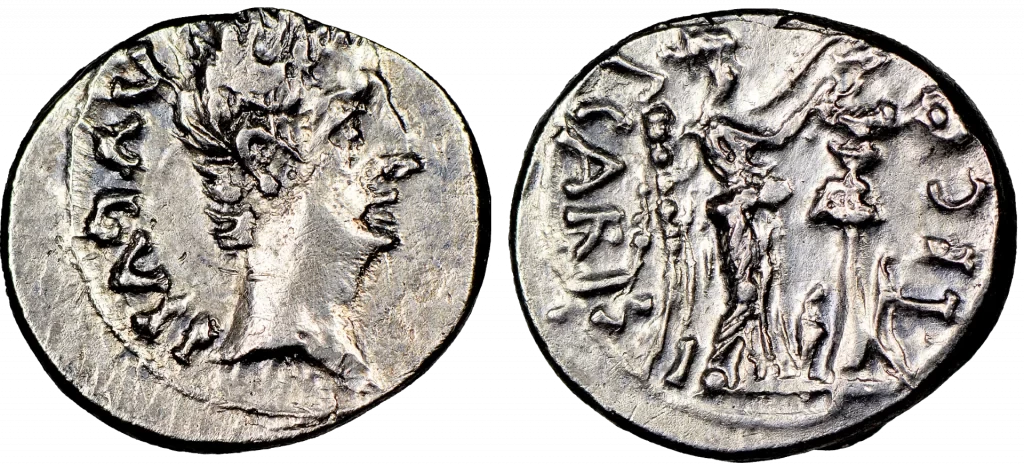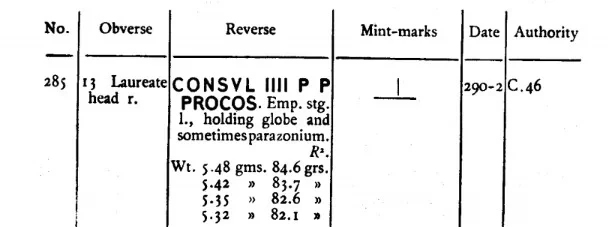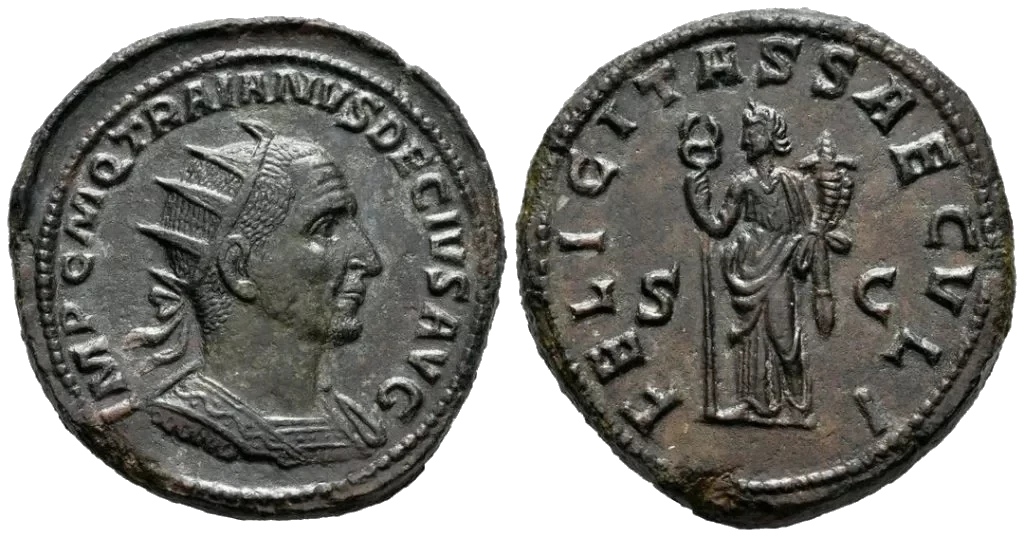The thing about coin collecting is that, when you are starting to get into it, you often come across specialized terminology that can be difficult to understand at the beginning of your numismatic journey. So, here in NumisTeacher, from time to time, we are going to take a look at those basic concepts. Today, we’ll see what the RIC number, or code, of a Roman coin is, and who decides it.
The RIC of a Roman coin (short for Roman Imperial Coinage) is a number belonging to the classification system established in the different volumes of the Roman Imperial Coinage, a catalog of Roman imperial coins in 15 volumes created from 1924 until today, covering the period from the Battle of Actium in 31 AD to the year 491.
What is the RIC Catalog?
The Roman Imperial Coinage is a catalog of Roman imperial coins created by several authors and published by the British company Spink & Sons. The first volume was published in 1923, and the last one didn’t come out until 1994. That means it took 71 years to complete.
And it’s no wonder: the RIC is a monumental work. Each of the 15 volumes has between 300 and 500 pages. It not only includes descriptions and photos of the coins, but also tells you the history and monetary policy of each emperor and contextualizes the coins within them.
Since 2007, Spink has been dedicated to revising, updating, and/or reissuing all the volumes. Although it must be said that the pace of publication has been very slow, so far only 5 of the 15 volumes have been published. It was in this latest iteration that Volume II was split into three, but Part 2 has not yet been published.
Unfortunately, editions before 2007 of the remaining volumes are out of print, although they can be found in auctions or thrift stores.
A list of the RIC’s 15 volumes
| Volume | Period |
|---|---|
| I | From Augustus (31 CE) to Vitellius (69 CE) |
| II, Part 1 | From Vespasian (69) to Domitian (96) |
| II, Part 2 | From Nerva (96) to Trajan (117) |
| II, Part 3 | Hadrian (117-138) |
| III | From Antoninus Pius (138) to Commodus (192) |
| IV, Part 1 | From Pertinax (193) to Geta (211) and Caracalla (217) |
| IV, Part 2 | From Macrinus (217) to Pupienus (238) |
| IV, Part 3 | From Gordian III (238) to Uranius Antoninus (254) |
| V, Part 1 | From Valerian (253) to Florian (276) |
| V, Part 2 | From Probus (276) to Maximian (310) |
| VI | From Diocletian’s Reform (294) to Maximinus Daza (313) |
| VII | From Constantine I (313) to Licinius (337) |
| VIII | The Family of Constantine I (337-364) |
| IX | From Valentinian I (364) to Theodosius (395) |
| X | The Divided Empire. Western Roman Empire: From Honorius (394) to Romulus Augustus (476). Eastern Roman Empire: From Arcadius (395) to Zeno (491) |
Examples of RIC Codes
Example 1
We start with Augustus and one of his Quinarius, a Roman coin minted between 23 and 25 in the Emerita mint, nowadays Mérida (Spain).

This is the very first coin in the catalog, and therefore its code is RIC I 1a. The “a” indicates that there is a variety. In this case, in variety RIC I 1b, Augustus is facing left:

Example 2
Our second example comes from Diocletian and it’s one of his Aureus, minted in 291 in Cyzicus (nowadays, in Turkey).

And here is the description of this Roman coin in the RIC. This coin is number 285 in Volume V, Part 2, and its RIC code is, therefore, RIC 5b 285.

Example 3
Our last example is a Double Sestertius by the emperor Trajan Decius, minted in Rome at some point between 249 and 251.

It appears in Part 3 of Volume IV and also has a variety. We can see in the photo that the legend on the obverse says DECIUS and not DECIVS, so the code for this coin is RIC 4c 155a.

And this is it. Hopefully, after reading this article, you have an idea of what the RIC number of a Roman coin is, where to look it up, and how to use it.